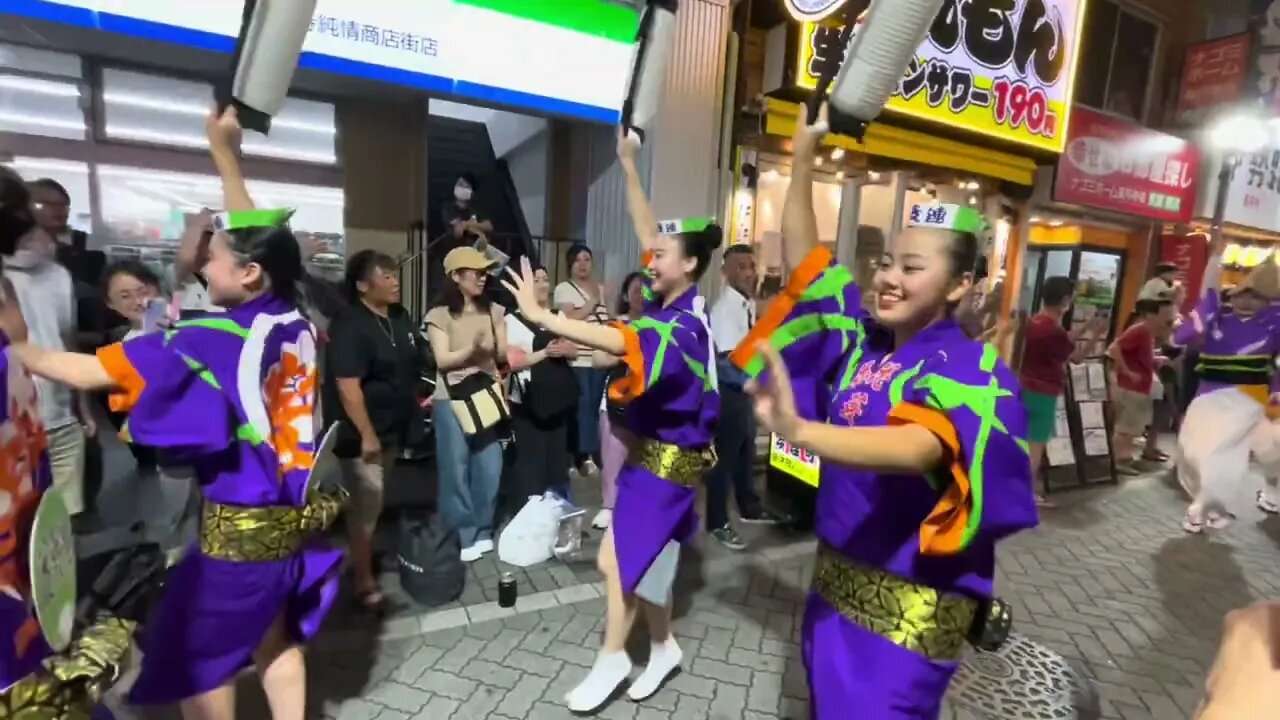Premium Only Content

Koenji Matsuri #summer #japan
On an average year in Koenji, a neighborhood on the west side of Tokyo known for its bohemian vibes, late August sees dozens of dance troupes flood the streets as they pound taiko drums, wave their arms and parade down the town’s main concourses in a two-day frenzy.
Based on a centuries-old summer festival from Tokushima Prefecture, this matsuri is known as the Koenji Awa Odori, and the commotion draws about 1 million visitors, making it one of the capital’s largest summer festivals.
On an average year, that is. Of course, the years between 2020 and 2022 were anything but average. Starting in 2020, the Koenji Awa Odori was canceled for three summers in a row because of the COVID-19 pandemic — the first full-scale cancellations in the festival’s history, which dates back to 1957. Now, the first Koenji Awa Odori since 2019 is set to take place this weekend.
To learn about the effect of that four-year gap and to see how preparations for the 2023 edition were progressing, I spoke to several people involved in the festival in the weeks leading up to the main event.
Inheriting a festival
Takeyuki Tomizawa, executive director of the Tokyo Koenji Awa Odori Promotion Association, which oversees the festival, was born into the Koenji Awa Odori tradition: His parents were shop owners on Koenji’s Pal shopping street, which initially brought the summer festival to Koenji as a way to boost summertime sales.
“In those days, only people from the shopping street were allowed to dance, and children of shop owners were forced to participate whether they wanted to or not — I hated it!” says Tomizawa with a laugh.
Awa was the name of a province on the eastern edge of Shikoku (present-day Tokushima Prefecture), and “odori” is the Japanese word for “dance.” The Awa odori ren (dance troupes) typically dance in a two-step rhythm called zomeki. Women wear large, pointed straw hats and dance on their tiptoes in wooden clogs with their arms waving in the air, while men take a crouched position, sometimes wielding uchiwa (fans) or chōchin (lanterns). They’re followed by the hayashi, or instrument section, which features thundering taiko, gongs, shamisen and flutes.
For the inaugural version of the festival in 1957 (in which Tomizawa’s mother danced) Koenji shop owners chose Tokushima’s Awa odori not because of any particular ties to the region, but because unlike other summer festivals, which require bulky mikoshi (portable shrines) or giant nebuta (floats), the Awa odori could be danced with ease down Koenji’s narrow streets.
“I think the close proximity between the dancers and the audience is still one of the biggest factors in the appeal of the Koenji Awa Odori,” Tomizawa says. “Both groups feed off each other’s energy, and spectators get fully enveloped in a shower of sound.”
Because no one in Koenji had actual Awa odori experience, the initial years of the festival didn’t look much like the Tokushima original, but it slowly came to resemble the real thing as the years went on. The celebration also expanded in scope, with several other Koenji shopping streets joining in on the action.
As the festival grew, so did management challenges, like dealing with the large amount of garbage left in the event’s wake. Tomizawa, now a recent university graduate working at his parents’ shop (and having recovered from his childhood hate of the festival), was drawn into festival management thanks to owning a certain item.
“Before PCs were common, I had an early word processor, so shop owners would come ask me to make flyers and other documents,” he says. “That got me more involved with festival operations.”
By the early 2000s, the festival was beset with organizational issues, says Tomizawa: the ren were linked up in a haphazard way with no one thinking about the festival’s overall budget. Festival leaders decided to turn the Tokyo Koenji Awa Odori Promotion Association into a dedicated nonprofit to handle such issues, headquartering the new NPO on the same shopping street where he had grown up. Tomizawa, having long recovered from his childhood hate of the festival, became executive director in 2011, the year of the Great East Japan Earthquake, when the festival’s start time was pushed up by two hours in the face of power-saving measures. That (plus torrential rains which forced the cancellation of one of the festival’s two days in 2001) was the closest thing to a full-scale stop in the 60-plus-year history of the festival — until 2020.
-
 1:12:12
1:12:12
Right Side Broadcasting Network
17 hours agoLIVE REPLAY: Defense Secretary Pete Hegseth and Gen. Dan Caine Hold a Pentagon Press Briefing - 6/22/25
171K267 -
 2:05:06
2:05:06
Sgt Wilky Plays
3 hours agoMorning Coffee and Karting
15.2K -
 58:09
58:09
Barry Cunningham
7 hours agoLIVE: Defense Secretary Pete Hegseth & Gen. Dan Caine Hold a Pentagon Press Briefing On Iran Bombing
86.1K195 -
 LIVE
LIVE
TonYGaMinG
3 hours ago🟣 QUESTING TRYIN TO GET READY FOR DEEP DESERT #RumbleGaming
109 watching -

TheItalianCEO
6 hours agoPlaying video game is better than touching grass
41.5K1 -
![[UPDATE 2.4] Hunt: Showdown | Sunday Solo Runs - #RumbleGaming](https://1a-1791.com/video/fww1/16/s8/1/J/A/L/V/JALVy.0kob-small-UPDATE-2.4-Hunt-Showdown-Su.jpg) 3:41:59
3:41:59
LumpyPotatoX2
6 hours ago[UPDATE 2.4] Hunt: Showdown | Sunday Solo Runs - #RumbleGaming
38.1K2 -
 2:12:01
2:12:01
Amish Zaku
6 hours agoVariety Stream
32.5K2 -
 23:51
23:51
Adam Does Movies
1 day ago $1.90 earned28 Years Later - Movie Review
31.4K12 -
 27:26
27:26
Scary Mysteries
1 day agoThe BUTCHER BAKER: Alaska's DEADLIEST Predator
28.6K3 -
 2:54:40
2:54:40
Gore TV
4 hours agoBRAINS? Nah, Just Beans. ☕🧠🧟 ♂ | Coffee Break with Zombies!
19.7K